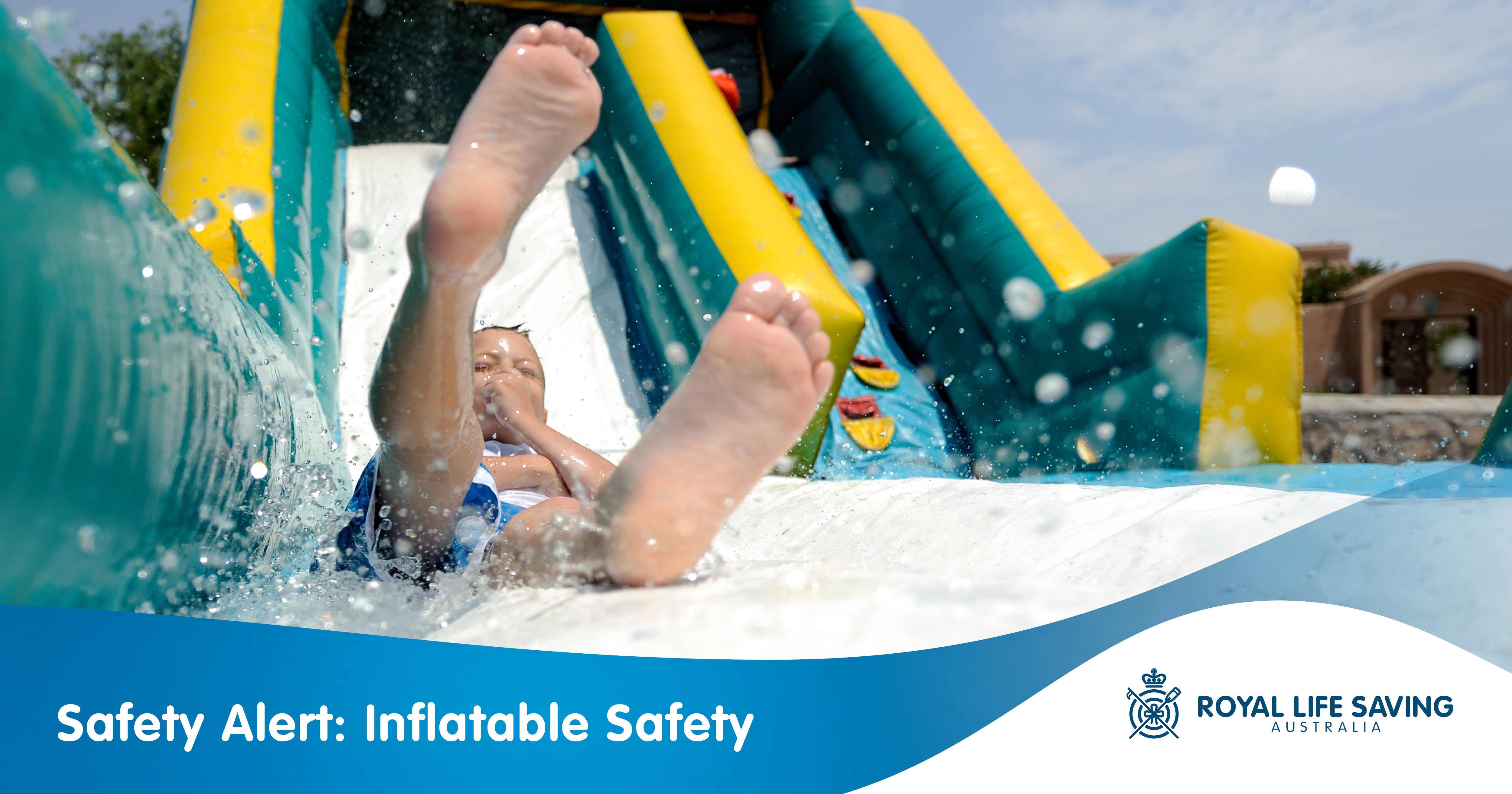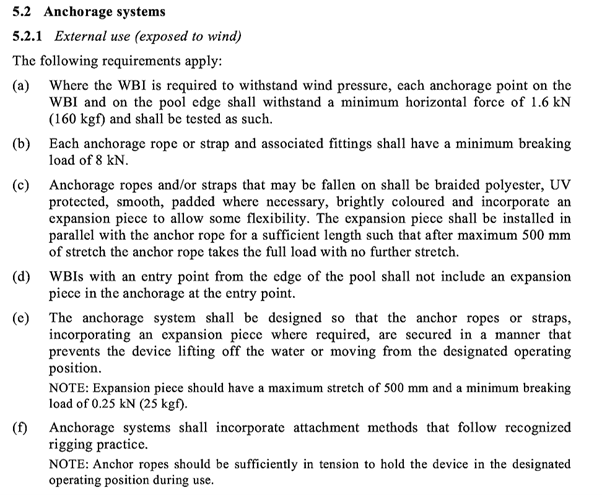Published 10 January 2022

Following the tragic event involving a jumping castle in Devonport, Tasmania, Royal Life Saving has received queries from across the National Aquatic Industry regarding waterborne inflatable safety in relation to risks resulting from gusts of wind and inflatable use in outdoor pools.
In 1988, a national standard (Australian Standard) was introduced to standardise and provide guidance on the use of amusement rides and devices which included portable devices. This standard was updated and amended in 1997, 2007, 2012, 2015 and in 2017, the current version of the waterborne inflatable devices standard was published, titled AS 3533.4.5-2017 – Amusement rides and devices, Part 4.5: Specific requirements – Waterborne inflatables.
The standard contains several relevant safety considerations for inflatable use, which are particularly relevant in commercial settings, such as public pools, where there is the added legal duty of care brought on by both common law and statute surrounding work health and safety as well as injury prevention.
Specifically, as relevant to the risk of the inflatable becoming airborne, there is a section on Anchorage systems.
The following is an excerpt from the standard:
Note: WBI means ‘Waterborne inflatable’ which means an inflatable used on controlled water, such as a swimming pool.

In addition to the section on anchorage, it should be noted that the standard carries requirements to inspect and test the relevant components of the inflatables’ safety.
In relation to anchorage systems a daily inspection should be conducted which includes inspecting all anchor points on the WBI, ropes and anchor points on the pool edge, ensuring they are secure, not worn and padded if necessary.
An annual inspection should also be carried out by a competent person in line with AS3533.2 and 3533.3 – and in addition to the various other requirements contained within the standard should inspect:
- the anchor system for wear, rips or chafing
- the type and number of anchors or ballasts for conformity with the design specifications
- the existence of a hazard identification and risk assessment
- staffing procedures including training and the number of lifeguards required to supervise the inflatable when in use
Lastly, the standard contains in its Appendices information on the limits within which owners and operators of inflatables should stay when setting up and operating inflatables in windy conditions as well as methods for calculating the number of anchorage points required for a WBI to address wind loads.
Royal Life Saving recommends that owners and operators of waterborne inflatables ensure they have access to this standard and operate their inflatable in line with the standard. You can access the standard at the Standards Australia website.
In additon to the Australian Standard, Royal Life Saving reminds waterborne inflatable operators of the supervision arrangements contained within the Guidelines for Safe Pool Operations: SV22 - Supervision of Inflatable Play Equipment and SV21 - Supervision of Floating Play Equipment as well as the inflatable use depth calculators available within the GSPO Forms and Templates area.
References
Water, M and Stokes, M 2010. “Inflatable Jumping Castles: advocacy in action”, Injury Prevention, 2010; No.16:A191.
Standards Australia 2017. AS 3533.4.5-2017 – Amusement rides and devices, Part 4.5: Specific requirements – Waterborne inflatables.
Royal Life Saving Society - Australia. 2018. Guidelines for Safe Pool Operations - Aquatic Supervision. Sydney, Australia.
